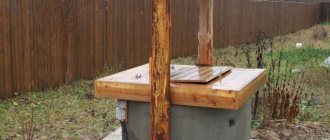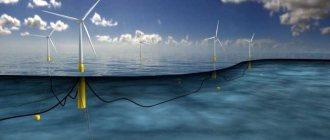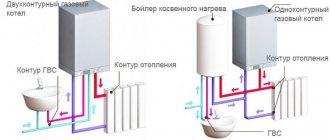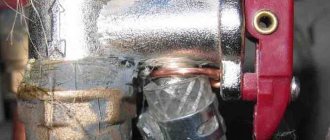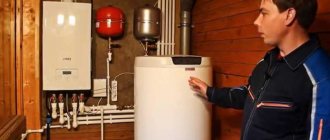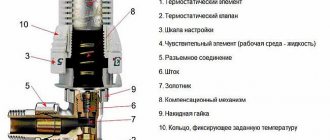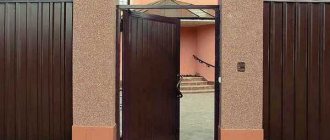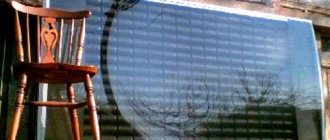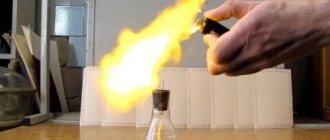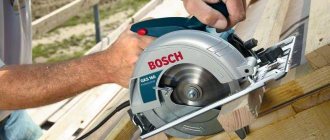Septic tank sewerage, what is it?
Translated from English, the word “septic tank” literally means “a structure for mechanical wastewater treatment.”
And speaking in engineering language, this is the settling and fermentation of sewage sludge with the subsequent removal of this sludge by a sewage disposal machine. There is another, more expensive way to dispose of wastewater, and it involves decomposing the wastewater with the help of oxygen and organic bacteria. Both methods are based on the arrangement in the ground of one or more (depending on the characteristics of the soil and the level of groundwater) polyethylene or plastic tank into which wastewater will flow.
The first method (in professional language it is called anaerobic or oxygen-free) involves the decomposition of waste naturally, without the use of an electric air compressor.
The second method (aerobic) is deep biological treatment, as a result of which waste is converted into harmless components. But this will no longer be, in fact, a septic tank, but an entire treatment station, the operation of which requires an air compressor.
In addition, the degree of purification in septic tanks and stations is different: in the first case, up to 70% of wastewater is purified, in the second – up to 95%.
However, the price will be completely different.
Principle of operation
The operating principle of the Summer Resident septic tank consists of step-by-step settling in separate chambers (mechanical treatment) and clarification of wastewater with anaerobic bacteria (biological treatment).
Domestic wastewater treatment consists of the following stages:
- Water flows from the house through sewer pipes by gravity through the inlet pipe into the first compartment of the tank. In the first compartment, stratification of the wastewater occurs: solid particles settle to the bottom, and liquid components end up in the upper part of the chamber. Simultaneously with settling, biological treatment begins. Anaerobic bacteria entering wastewater along with human waste products trigger the oxidation process and begin to decompose solid biological waste, turning it into sludge.
- From the first compartment, only the liquid part of the waste flows into the second. This happens due to the fact that the overflow pipe between the chambers is at such a height that neither solid particles (settled below) nor greasy film (collected on the surface) enter the second compartment. In the second compartment, the process of settling and the active work of microorganisms continues. Smaller suspended particles settle to the bottom of this chamber, and the liquid becomes even cleaner as a result of the work of bacteria.
- Only purified water enters the third compartment, as well as the second. From this reservoir it flows into a special device called a sprinkler.
- Final wastewater treatment occurs through soil filtration.
The manufacturer claims that as a result of the processes described above, household wastewater is purified by 95%. Moreover, 80% of the cleaning work is performed by anaerobic bacteria, and the remaining 15% is achieved as a result of soil purification.
The appearance of the Summer Resident sprinkler can be seen in the image below.
Irrigator - soil treatment device
Note! Summer resident septic tanks are energy-independent installations. The process of recycling waste does not involve devices or mechanisms powered by electricity. The exception is modifications of units with forced pumping of water. They are equipped with drainage pumps powered by electricity.
How to choose a septic tank for a private house and cottage
Price order
If on average in the Moscow region you can buy a septic tank from the manufacturer at a price of 20 to 80 thousand rubles and more, depending on the number of people living in the house, then for deep cleaning systems the prices are much higher and reach 400 thousand rubles.
Additionally, the price of a particular septic tank or station is also influenced by the “promotion” of the manufacturer, the material from which they are made, the model and technical capabilities.
So what type of autonomous sewer system should you choose?
Of course, you need to choose taking into account your financial capabilities, general level of comfort, the distance of your country house or cottage from sewage services and the total volume of water consumption.
In this article we will try to understand the variety of septic tanks. Their advantages and disadvantages. Price categories of individual models. We will try to choose the best offer on the market.
Service
The manufacturer recommends periodically (once every 3-5 years) pumping out the contents of the septic tank. This process is necessary to remove solid non-degradable particles (sand, pieces of glass, etc.). Pumping can be done using a sewer truck or a conventional drainage pump.
Note! Immediately after pumping, the container should be refilled with water to avoid possible compression of the tank walls as a result of external soil pressure.
If a septic tank is installed at the dacha and there is a need to preserve it for the winter, then only 15-20% of the liquid from the total volume is pumped out of it. In addition, safety measures should be taken in case the water freezes inside the container. To do this, simply throw ordinary plastic bottles through the neck into each compartment. They will act as pressure stabilizers when an ice crust appears on the surface of the liquid. In this case, the walls of the container are not deformed. Neck covers should be insulated for the winter.
To extend the service life of filtration fields (up to 20 years or more), the manufacturer recommends periodically pouring a preparation containing anaerobic bacteria into the septic tank during operation. This is not a necessary condition, since the bacteria that enter the container with human waste products are quite sufficient for its functioning.
Selection parameters and calculation of septic tank volume
Our selection will be based on the following criteria:
- Number of family members: 2-3 people. Only sometimes do guests come to you.
- Or you visit your dacha (country house) only on weekends in the summer, and live permanently only during your vacation.
Let's take the average wastewater consumption per person as a basis. This is 200 liters per day. Consequently, the volume of household wastewater per family will be 400-600 liters, and at peak load times 1000-1200 liters.
This means that the volume of the septic tank must be appropriate - from 2 cubic meters / day. "Why?" - you ask. Yes, because the number of tanks where it ends up depends on how much wastewater there is.
In the settling chamber, the wastewater is divided into different fractions: the heavy ones sink to the bottom, and the lighter ones remain at the top, then entering the next tank, where it is cleared of other organic impurities, and only then enters the soil.
Therefore, we advise you to choose a two-chamber septic tank with an overflow or a septic tank with one horizontal or vertical tank, divided into 2 parts.
Material of manufacture
The next question is the material from which the septic tank is made. Fiberglass or polyethylene?
Fiberglass is usually fiberglass impregnated with resin, and due to this it has a fairly durable structure. Fiberglass products are comparable in strength to metal. Septic tanks made of fiberglass are absolutely not subject to corrosion and can be used when working with high-temperature wastewater or aggressive liquids.
A polyethylene septic tank is not inferior to fiberglass in its strength, but its advantage is that it is less susceptible to fractures as a result of loads or soil shifts in the pit itself. In terms of price they are not too different.
We now move on to choosing a septic tank model.
Septic tank: price and negative reviews
The most advertised brand in Russia on the autonomous sewerage market is the Septic Tank model range. The price with turnkey installation is from 15 to 60 thousand rubles, depending on the chosen model.
Septic tanks Tank are indeed very popular and relatively inexpensive.
From the outside, the septic tank looks like a sealed plastic container, divided into several sections. According to the manufacturer, this septic tank Tank purifies wastewater from impurities up to 98%, but whether this is true has not been confirmed by any independent laboratory tests.
Despite the large number of positive reviews, these septic tanks are still criticized by buyers. Basically, the criticism comes down to the fact that there are cases:
- When the buyer has not calculated the volume of wastewater, and the wastewater flows either into the “return” or onto the surface;
- When the walls or bottom of the septic tank cannot withstand the pressure and cracks form in the body.
- Also, the design of the septic tank itself requires its installation by a specialized company, otherwise the manufacturer does not bear a warranty. And this is additional financial costs.
- Another drawback is the small thickness of the tank walls compared to the thickness of other septic tanks.
Negative reviews about the Tank septic tank on one of the sites
Another important detail is regular cleaning of the tank itself. Tank septic tanks must be constantly monitored.
Product Features
Summer resident septic tanks are a horizontally located rectangular container made of sheets of low-pressure, high-density polypropylene. The welds are made using extrusion welding. The manufacturer claims that at the junction of sheets, high structural strength is achieved due to double welding of each seam.
For reference. Extrusion welding is a method of joining polypropylene parts by feeding molten filler material into the gap between surfaces using a special extruder gun. The hot additive heats and melts the edges of the parts, connecting them together.
Before going on sale, ready-made welded containers undergo a 48-hour leak test by filling them with water.
The walls of the structure are reinforced from the outside with stiffening ribs. Partitions are installed inside the unit, dividing the internal space into separate chambers.
On the top of the container there are 1 or 2 (depending on modification) necks for servicing the unit. On the side walls there are pipes for connecting incoming and outgoing pipelines.
The manufacturer provides a 5-year warranty on its products.
Photo: appearance
Septic tank Topaz
The Topaz septic tank competes with Tank in popularity. But here a different cleaning technology is used - the so-called aerobic cleaning process (we already talked about it above), and it is designed for permanent or seasonal residence.
It is necessary to install an additional pump for Topaz septic tanks, which will forcibly remove purified water.
If manufacturers recommend installing the Tank on sandy or sandy loam soils with low groundwater levels, then Topaz is installed in any type of soil.
But the price will be different: if a Tank 2.5 septic tank will cost you on average about 36,000 rubles, then to buy a Topas 5PR septic tank you will have to pay 80,000 rubles. High cost is the only drawback of the Topas septic tank.
Negative reviews about the Topaz septic tank on one of the sites
Also, septic tanks from other manufacturers under the trademarks “Rostok”, “Tver”, “Dochista”, “Microbe” and “Termite” are in demand.
The lineup
The range of installations for the collection and treatment of wastewater is represented by models of various capacities.
Summer resident 1
The lowest-power installation, Summer Resident 1, is designed for a small family (no more than 3 people) living in a house with a toilet and washbasin, but no bath or shower.
| Total volume of container, cubic meters | Productivity, liters/day | Length, m | Width, m | Height, m |
| 1 | 400 | 1.16 | 0.95 | 1.5 |
Summer resident 1: appearance of the septic tank
Summer resident 2
The Dachanik 2 installation is the most popular among users, as it has average power. Can be used in a home with a toilet, 2 washbasins and a bathtub.
| Total volume of container, cubic meters | Productivity, liters/day | Length, m | Width, m | Height, m |
| 2 | 700 | 1.5 | 0.95 | 2 |
Summer resident 2: appearance of the septic tank
Summer resident 2.5
Installation for a large home with a full set of plumbing including: 2 toilets, 4 sinks, bathtub and shower.
| Total volume of container, cubic meters | Productivity, liters/day | Length, m | Width, m | Height, m |
| 2.5 | 1000 | 1.9 | 0.95 | 2 |
Summer resident 2.5: appearance of the septic tank
In addition to these models, the manufacturer’s catalog also includes a septic tank Dachnik 3, the technical parameters of which, unfortunately, are not presented on the official website.
Also, all of these models are available with a PR attachment, equipped with drainage pumps and intended for installation in places with high groundwater levels. These are septic tanks: Summer Resident 1 PR, Summer Resident 2 PR, Summer Resident 2.5 PR and Summer Resident 3 PR.
Note! The sprinkler should be installed in septic tanks with forced drainage above the groundwater level.
The assortment of Dachnik septic tanks also includes deep cleaning stations with the “ultra” prefix, information about the operating principle and features of which is not provided on the manufacturer’s official website.
In the price list, the company invites customers to purchase Dachnik ultra 4, ultra 6 and ultra 8 units. They are probably classified according to volume - 4, 6 and 8 cubic meters, respectively. It is also clear from the markings that “ultra” stations are offered in two versions: gravity (prefix C in the marking) and with forced (prefix PR) drainage.
Septic tank Rostock
The range of Rostok septic tanks is presented in three versions: “Mini”, “Dachny” and “Cottage”.
It differs from the septic tanks already discussed in that it is made of polypropylene using seamless technology and has an original design, which is equipped with a damper for the incoming wastewater flow to avoid “stirring up” the sediment.
The disadvantages include the high cost of installation, which is almost the same as the product itself (40-45 thousand rubles) plus dependence on groundwater.
Installation
Installation of septic tanks Summer resident is carried out in the following sequence:
- A pit is dug in such a way that after installing the container in it, there is at least 25 centimeters of free space from the walls of the soil to the outer surface of the unit on all sides.
- The bottom of the pit is covered with a sand cushion 10-15 centimeters thick.
- The unit is lowered into the pit and leveled.
- The upper part of the body is insulated with foil polystyrene foam. The thickness of the insulating layer must be at least 3 centimeters.
- Backfilling is carried out with a cement-sand mixture in a ratio of 1:5. Backfilling is done in stages. Each layer is spilled with water to avoid the formation of voids. Simultaneously with filling, the container is filled with water. This is done in order to equalize the internal and external pressure on the walls of the unit.
- The upper part of the septic tank is filled with soil.
For the installation of a septic tank for a summer resident, a standard version of the scheme with a soil treatment device is suitable
Septic tank Tver: negative reviews and disadvantages
Let us now consider a septic tank under the trade name “Tver”. The price of this septic tank will range from 65 to 80 thousand rubles.
The price increase occurs due to four-stage wastewater treatment, so this septic tank does not require aeration fields.
This Tver septic tank needs to be cleaned once a year.
The disadvantages of septic tanks in Tver include, perhaps, the only one, but a very serious one: it is a septic tank chamber where fermentation and putrefactive processes occur, and from this an unpleasant odor appears (or may appear).
An example of a negative review about a septic tank Tver
Other brands
Often, the inflated price for a particular septic tank depends on the advertising budget and the marketing “packaging” used by sewer system manufacturers.
Septic tanks Dochista (price from 30 to 40 thousand rubles), septic tank Microbe (mini-septic tank, the price of which varies from 10 to 17 thousand rubles) and septic tank Termite (price from 24 to 60 thousand rubles) are less known, less, so to speak, “ promoted."
But their work is based on the principle of wastewater treatment common to all septic tanks: sedimentation of wastewater and subsequent biological purification.
conclusions
The choice depends not only on how many users of the septic tank there will be and not only on the amount of money for the purchase, but also on a number of other factors:
- Do you want to install a septic tank yourself or invite specialists.
- Does the territory of your site allow you to create an aerobic zone or not?
- Do you have enough patience, strength and time to control the operation of the septic tank or do you need to “set it and forget it?”
- Are you ready to put up with the occasional unpleasant odor or not?
- Is there a sewage disposal service nearby, prices for services in the Moscow region average from 800 rubles per cubic meter? m.
Nobody wants to bother themselves with various technical problems. Nobody wants to tighten screws and nuts, doesn’t want to check the level of wastewater in the sewer, doesn’t want to sit and wait for a sewer truck.
We come to a country house to relax, listen to birdsong, go to the forest to pick berries and mushrooms, barbecue and enjoy nature. Instead of thinking about the consequences when opening a water tap or flushing the toilet. Therefore, our choice: a complete cleaning septic tank, as they say, from “a” to “z”. And the choice of a specific model is yours!
